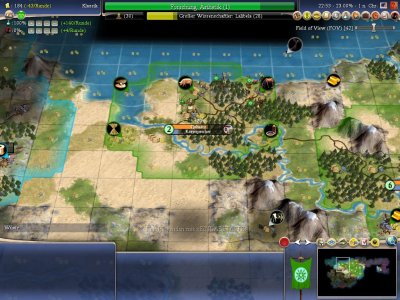AcaMetis
Deity
- Joined
- May 21, 2018
- Messages
- 2,196
Situational. I'd never argue that turning a 1Am I the only one who thinks worshops are worthless? Like the -1 food is just too much of a penalty which newer ever makes them worth using.
 1
1 plains tile into a 2
plains tile into a 2 plains tile makes it meaningfully better, but it's a way to add production to a city that desperately needs it, and of course when you've got techs/State Property to buff workshops they obviously become a lot better.
plains tile makes it meaningfully better, but it's a way to add production to a city that desperately needs it, and of course when you've got techs/State Property to buff workshops they obviously become a lot better.




 )is still mediocre. However, when there is seafood the boat needs to get there somehow and an ORG lighthouse is a good building since it's only 30
)is still mediocre. However, when there is seafood the boat needs to get there somehow and an ORG lighthouse is a good building since it's only 30